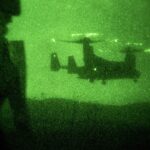U.S. Operators assigned to the Naval Special Warfare Development Group (DEVGRU, also known as “SEAL Team Six”) reached the crash site of the Bombardier Global Express E-11A aircraft in Ghazni province (central Afghanistan), “ConnectingVets” reports. The SEALs recovered the bodies of the two pilots and the aircraft’s recorder, or “black box.”
The U.S. Air Force E-11A (registration number: 11-9358) crashed in the Taliban-held Dih Yak district, 130 km south of Kabul, at 13:10 local time on January 27, 2020. The crew issued a “mayday” call while the aircraft was at a cruising altitude of 42,000 feet, Newsweek has learned. Investigators are looking into technical malfunctions and “bad fuel”.
Unverified video indicate loss of #US @usairforce E-11A aircraft in #Afghanistan pic.twitter.com/utO19GU5nG
— Joseph Dempsey (@JosephHDempsey) January 27, 2020
The footage of the crash site, released by the Taliban and Iranian media, shows the aircraft’s fuselage barely split from the tail section and cockpit, resting in a horizontal position after sliding for several meters on its “underbelly.” This is consistent with a controlled landing. There is no evidence that the aircraft was shot down by enemy fire as the Taliban claim.

Another angle shows how “intact” the aircraft remained despite its hard landing/ crash. An enemy MANPAD missile would have blown the aircraft into pieces.
The E-11A is just one of the four Battlefield Airborne Communications Node (BACN) aircraft in service with the U.S. Air Force. The role of a E-11A is to establish, relay and extend secure communications and data fusion between sea, air and land forces in a theater of operations. Besides the three BACN-capable E-11A left, the RQ-4 “Global Hawk” can also operate as an airborne communications relay.
The crash is still being investigated by the U.S. Department of Defense and we will update this article when more details will be released.
- Russia Bombs Maternity Ward & Children’s Hospital in Mariupol As Part of Siege - 10 March 2022
- T-Intell’s OSINT Training Marks One Year Anniversary - 18 November 2021
- IS-K Never Left the Battlefield - 27 August 2021





